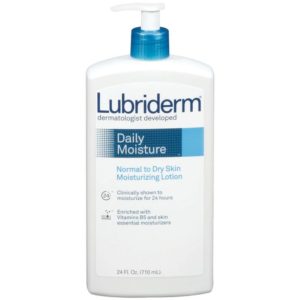 A recent study found that within hours of applying sunscreen, the chemicals in the sunscreen appear in the person's blood - and at levels high enough to be of concern. Of course the chemicals enter the body! Why is anyone surprised? Generally, assume that what you put or get on your skin enters your body - lotions, pesticides, etc.
A recent study found that within hours of applying sunscreen, the chemicals in the sunscreen appear in the person's blood - and at levels high enough to be of concern. Of course the chemicals enter the body! Why is anyone surprised? Generally, assume that what you put or get on your skin enters your body - lotions, pesticides, etc.
The small study was conducted by the Center for Drug Evaluation and Research, which is a part of the US Food and Drug Administration (FDA). Commonly available sunscreens (2 different sprays, a lotion, and a cream) were applied on 24 volunteers according to directions. Within hours the four sunscreen ingredients being studied (avobenzone, oxybenzone, ecamsule and octocrylene) had entered the bloodstream at levels high enough to cause concern. They also found that the blood concentration of three of the ingredients continued to rise as daily use continued and then remained in the body for at least 24 hours after sunscreen use ended.
The four chemicals studied are among a dozen chemicals that the FDA recently said needed to be researched by manufacturers before they could be considered "generally regarded as safe and effective." Especially worrisome is oxybenzone, which is in 85% of chemically based sunscreens - and has also been found in breast milk, amniotic fluid, urine, and blood. It is an endocrine disruptor, and linked to various health problems. With these chemicals, the more one uses, the more gets into the body - and people may apply sunscreen several times a day. They may also be found in personal care products and cosmetics. But unfortunately, as with so many chemicals that we are exposed to - long-term effects of frequent or chronic exposure are unknown.
The Environmental Working Group (EWG) rates sunscreen chemicals and is an excellent resource in finding safe sunscreens, as well as those that should be avoided. The EWG has a page discussing the problems with these chemicals, including that they are endocrine disruptors. They also have a page on nanoparticles (typically zinc and titanium dioxide), which are also used in sunscreens.ided. The EWG has a page discussing the problems with these chemicals, including that they are endocrine disruptors. They also have a page on nanoparticles (typically zinc and titanium dioxide), which are also used in sunscreens.
...continue reading "Sunscreen Chemicals Enter the Bloodstream"

 Yes, the chemicals in personal care products and cosmetics you use absolutely get into your body, have effects, and can be measured in the urine. Of especially big concern are the endocrine (hormone) disrupting chemicals such as phthalates, parabens, triclosan, and oxybenzone (BP-3). This study shows that even taking a 3 day break from these chemicals lowers their levels in your body. The researchers found that : "The adolescent girls in this study experienced an average within girl decline of 27-45% in urinary concentrations of certain phthalates, certain parabens, triclosan, and oxybenzone after three days of abstaining from conventional personal care products and using replacement products with labels indicating they did not contain these chemicals."
Yes, the chemicals in personal care products and cosmetics you use absolutely get into your body, have effects, and can be measured in the urine. Of especially big concern are the endocrine (hormone) disrupting chemicals such as phthalates, parabens, triclosan, and oxybenzone (BP-3). This study shows that even taking a 3 day break from these chemicals lowers their levels in your body. The researchers found that : "The adolescent girls in this study experienced an average within girl decline of 27-45% in urinary concentrations of certain phthalates, certain parabens, triclosan, and oxybenzone after three days of abstaining from conventional personal care products and using replacement products with labels indicating they did not contain these chemicals."